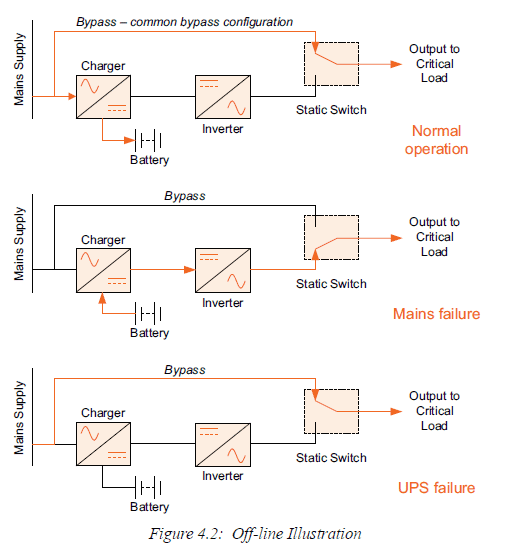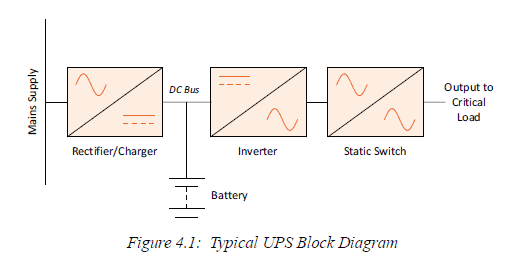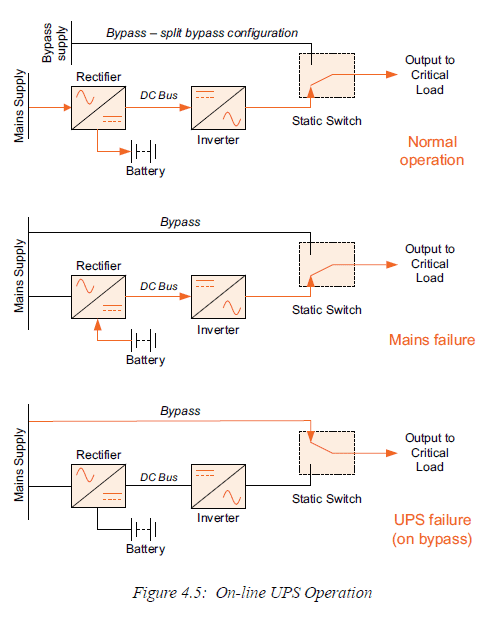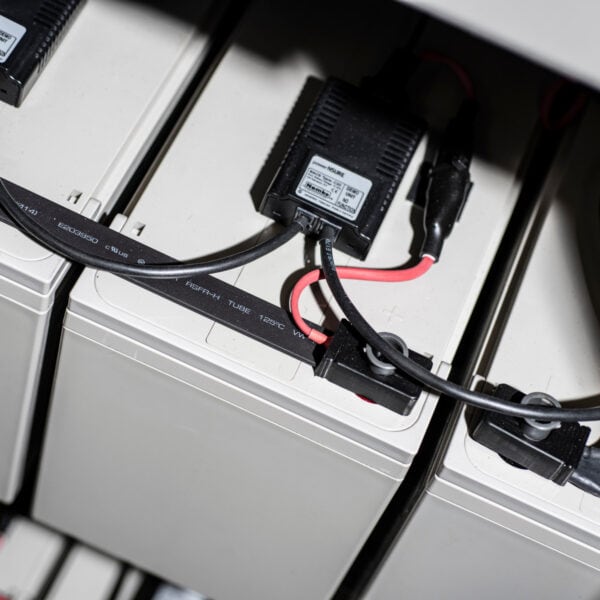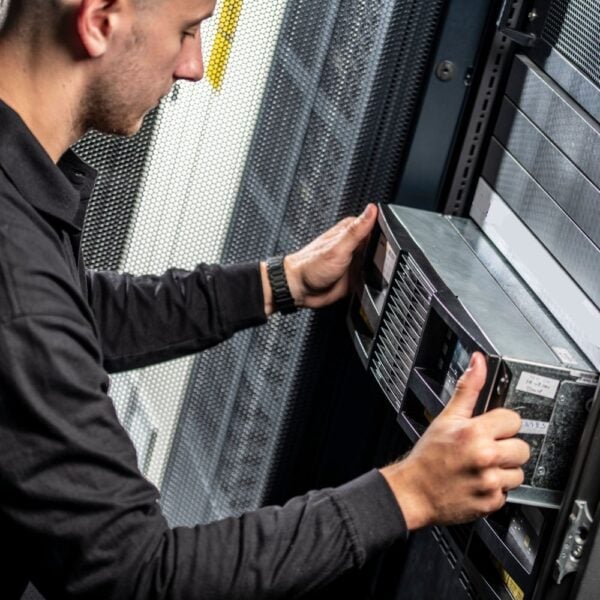Modern, static UPS systems are classified as either on-line or off-line, with some off-line variants known as line-interactive types. Nearly all data centres and other application with critical loads will opt for on-line solutions as they offer much better protection. However, operators of less-critical applications may decide that off-line systems’ reduced costs justify their increased risk exposure. Below, we show the key points of each topology, so you can make the best choice for your particular facility.
UPSs of either type comprise a rectifier/charger, batteries, and an inverter as shown in Fig.1. The rectifier/charger converts incoming AC mains power to DC, which charges the batteries and feeds the inverter, which in turn supplies the load.
Fig.1: Typical UPS block diagram
However, this power flow doesn’t happen all the time. During off-line UPS normal operation, as shown in Fig.2, the load is fed with raw mains power via the static bypass line. It is only switched to the inverter output if the mains supply fails or transgresses preset limits. This means that the load is subjected to any mains-borne sags, spikes or other disturbances for practically all its operational uptime, although this is usually mitigated with spike suppression and radio-frequency (RF) filtering.
Fig.2: Offline UPS during normal operation
Any switch to or from the inverter invokes a short interruption to power of typically 2 – 10 ms, especially if the inverter is turned off to save energy during normal operation. However, most modern loads should be able to ride through such breaks without loss or damage.
We can summarise the pros and cons of off-line UPSs as below:
- Minimal power protection
- Output voltage not closely regulated under normal operation
- 2 – 10 ms power break to load during transfer either way between bypass and inverter
- Lower capital costs due to lower-rated components and omission of the rectifier
- Lower operating costs as greater efficiency is possible while the rectifier and inverter stages are being bypassed.
On-line systems are configured as in Fig.3. During normal operation the mains power is routed through the rectifier/charger and inverter before reaching the load. The rectifier/charger generally includes an input current limit feature to provide overload protection and a DC overvoltage shutdown mechanism to protect the battery, inverter and DC filter components. In any case, the load is receiving processed power for all the time that the UPS is operational. The rectifier, charger and inverter blocks act as a barrier to mains-borne noise and transient voltage excursions, as well as providing a well-regulated output voltage.
Fig.3: Online UPS during normal operation
Additionally, if the mains supply fails, the inverter continues operation from battery power in a changeover entirely invisible to the load; there is no transfer operation and no interruption to power. The pros and cons of on-line systems accordingly emerge as follows:
- The highest level of critical load protection, as the load is supplied with closely-regulated power at all times
- No load break as transferring between inverter and bypass is unnecessary during power disturbances; mains break is totally invisible to the load
- Higher capital cost
- Higher operating costs as power is permanently passed through the UPS components, therefore subject to losses. However, these have been steadily reduced by developments in transformerless technology, with efficiencies of up to 96% being achieved.

